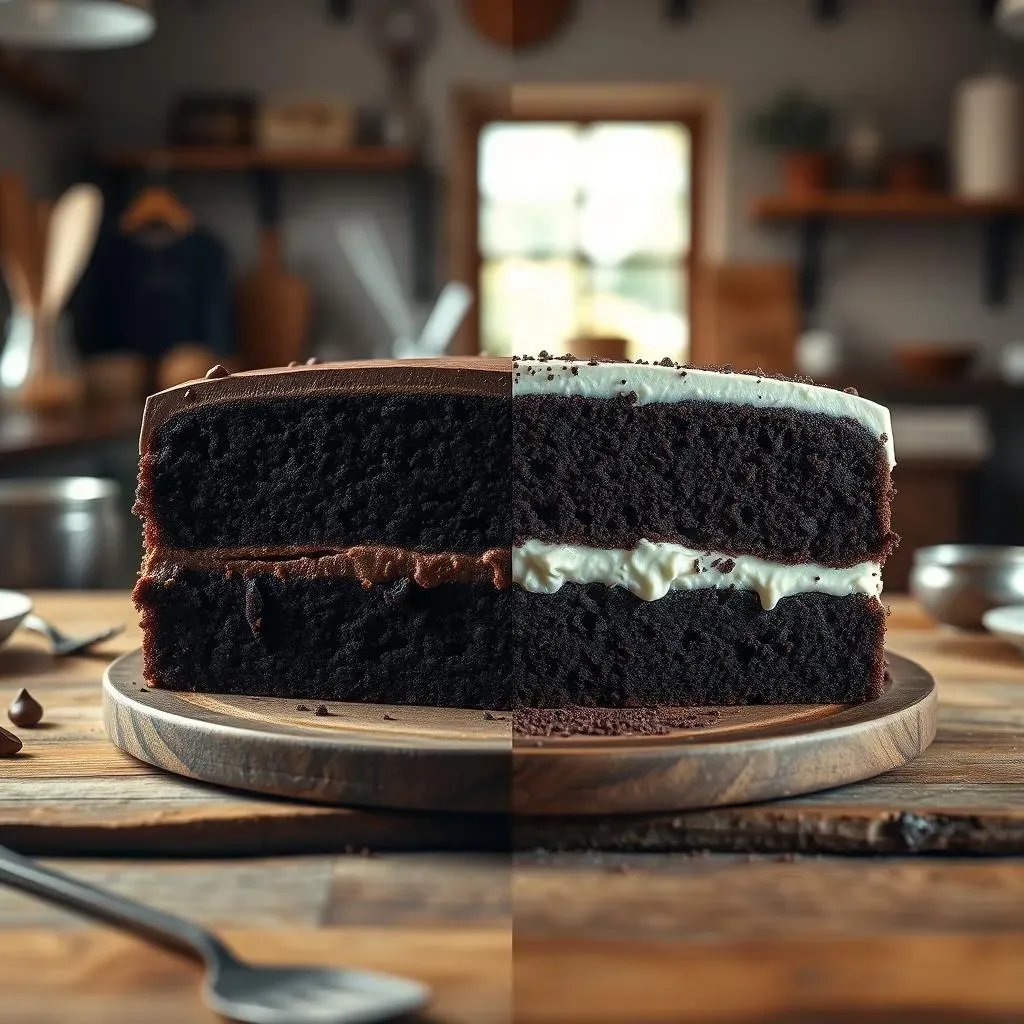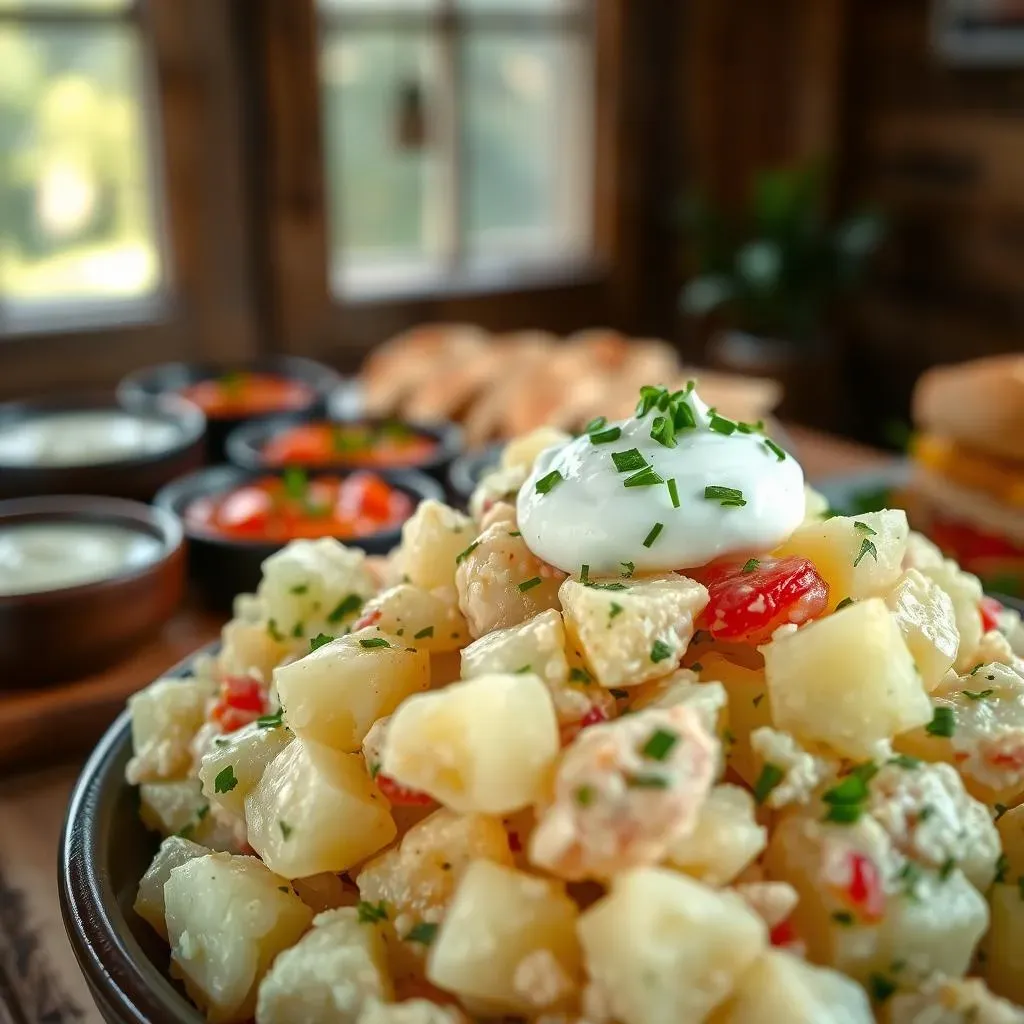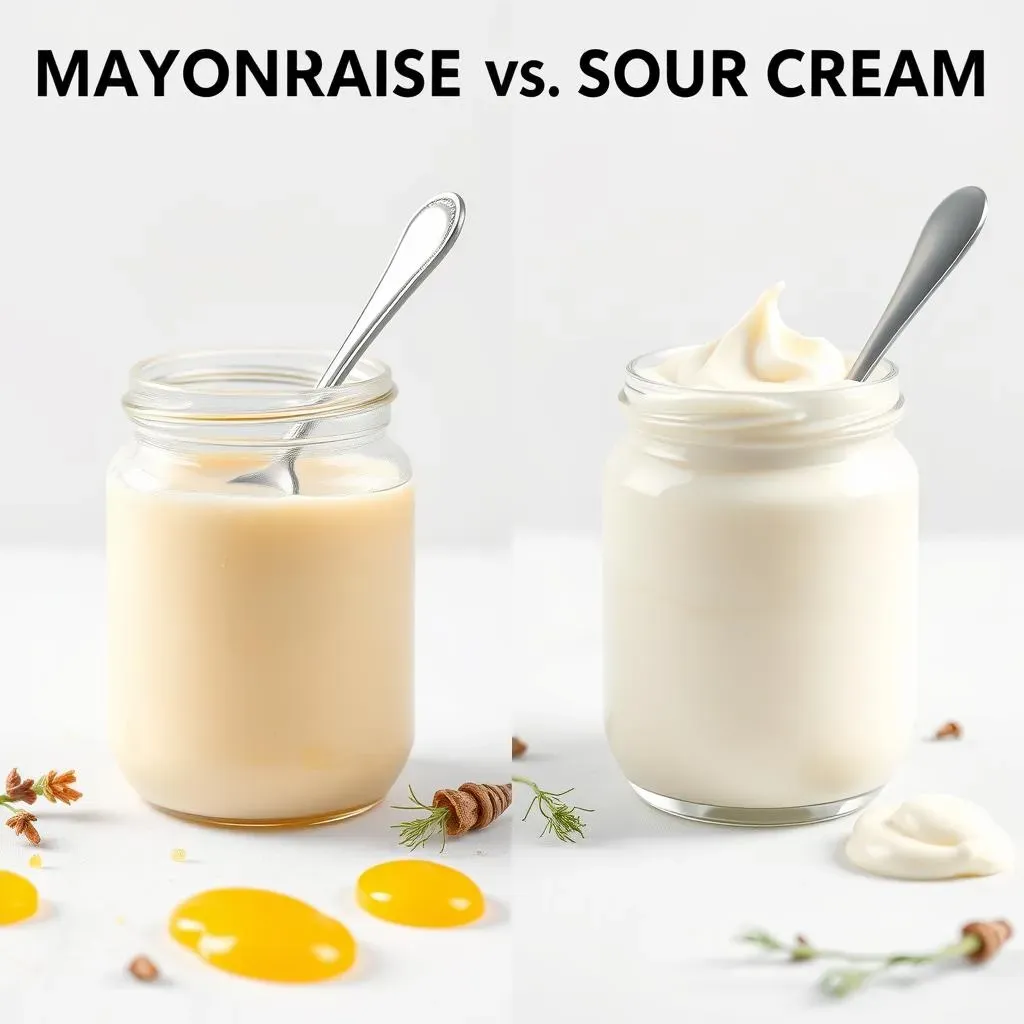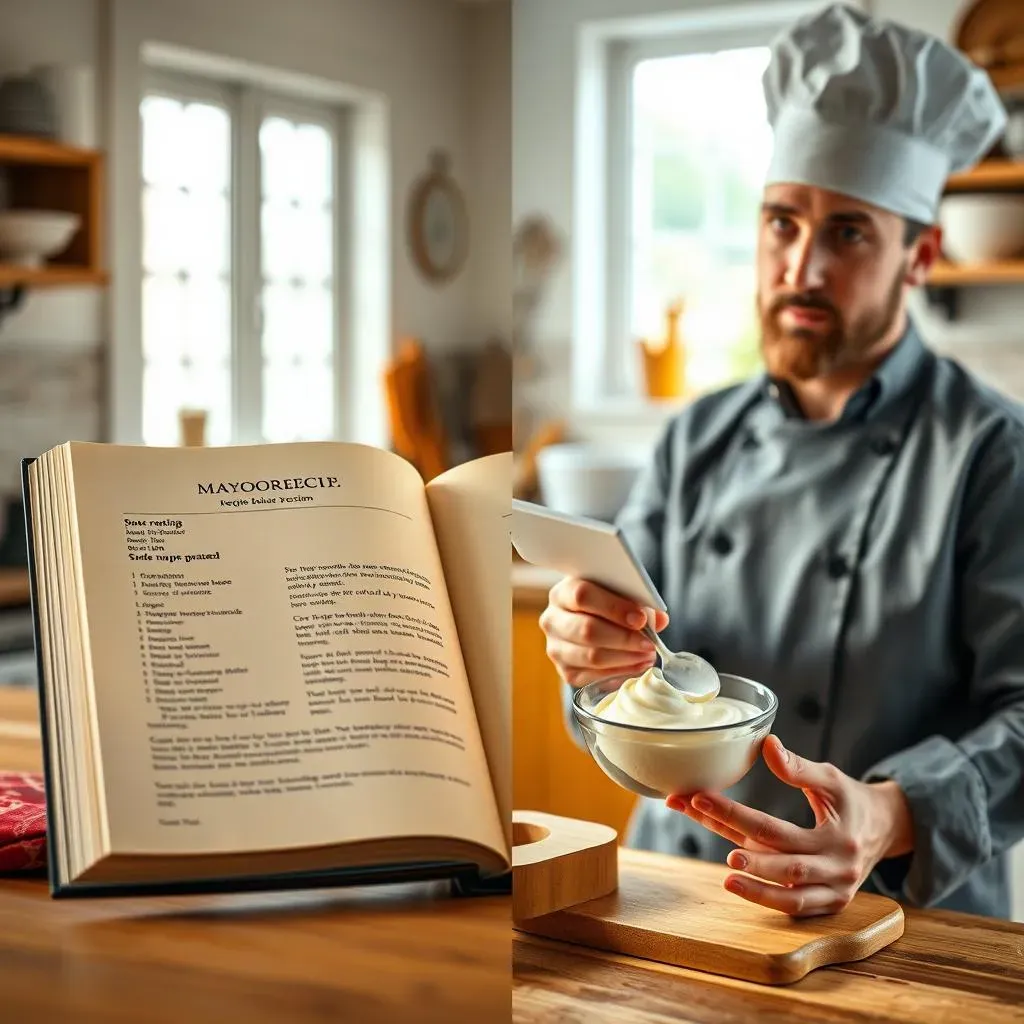Table of Contents
Ever stared blankly at a recipe, realizing you're out of mayonnaise? The panic sets in – will your dish be ruined? The answer might surprise you: sometimes, sour cream can step in! This article tackles the burning question: "can you substitute sour cream for mayonnaise?" We'll explore the nuanced world of culinary substitutions, examining whether this swap works in baking, savory dishes, and everything in between. We'll delve into the key differences between sour cream and mayonnaise – their textures, flavors, and how those differences impact your cooking. Get ready to discover not just whether it's *possible* to substitute, but when it's *wise* to do so, and how to adapt your recipes for optimal results. Prepare to conquer your culinary conundrums and transform kitchen mishaps into delicious triumphs! Let's get started!
Can You Substitute Sour Cream for Mayonnaise in Baking?

Can You Substitute Sour Cream for Mayonnaise in Baking?
So, you're wondering if you can swap sour cream for mayonnaise in your baking? It's a surprisingly common question, and the answer is...it depends! Mayonnaise adds richness and moisture to baked goods, thanks to its oil and egg content. Sour cream, while also creamy, offers a tangier flavor and a slightly different consistency. In cakes, for instance, mayonnaise contributes to a tender crumb, while sour cream might lead to a slightly denser texture. The tanginess of sour cream can also alter the overall flavor profile of your baked goods. Think of it like this: mayonnaise is like a smooth, velvety hug, while sour cream is more like a lively, slightly tart dance partner. They both contribute to the party, but in quite different ways.
Ingredient | Mayonnaise Contribution | Sour Cream Contribution |
|---|---|---|
Fat Content | High, provides richness and moisture | Moderate, adds moisture but less richness |
Flavor | Mildly tangy, mostly neutral | Pronounced tang, can be overpowering |
Texture | Smooth, creamy, emulsifies well | Slightly thicker, can affect rise |
Let's say you're making a chocolate cake. Mayonnaise will create a luxuriously moist cake with a subtle tang. If you substitute sour cream, you might end up with a slightly drier cake, with a more prominent sour flavor – which could be delicious, depending on your preferences! The key is to understand how these differences will affect your final product. You might need to adjust other ingredients, such as reducing liquids slightly if using sour cream, to compensate for its thicker consistency.
- Cakes: Mayonnaise often results in a moister cake, while sour cream can make it denser.
- Cookies: Sour cream can add chewiness, but the tang might not be ideal for all cookie recipes.
- Muffins: Both can work, but sour cream might make them slightly more dense and tangy.
Ultimately, the best way to determine if a sour cream substitution will work in your favorite baking recipe is to experiment! Start with a small batch, and if you don't like the outcome, you can always make another batch using mayonnaise. Remember, baking is a journey of discovery, so embrace the experimentation and enjoy the results—even the unexpected ones!
Using Sour Cream as a Mayonnaise Substitute in Savory Dishes

Using Sour Cream as a Mayonnaise Substitute in Savory Dishes
Now, let's shift our focus from the sweet world of baking to the savory realm of dips, dressings, and sauces. Can sour cream successfully stand in for mayonnaise here? The answer is a resounding "sometimes," but with some important caveats. Remember, mayonnaise brings a smooth, emulsified texture and a subtle tang. Sour cream, on the other hand, boasts a thicker consistency and a more pronounced sourness. This means that a direct swap isn't always ideal. In some applications, like potato salad, the thicker consistency of sour cream might make the salad feel a bit heavy. However, in other cases, the tangier flavor could actually be a welcome addition. Think creamy dips for vegetables—the sour cream's tartness can cut through the richness of the vegetables beautifully. It's all about finding the right balance.
Dish | Mayonnaise | Sour Cream (Considerations) |
|---|---|---|
Potato Salad | Classic, smooth texture | Thicker, might need thinning with milk or buttermilk |
Dips (e.g., veggie dip) | Creamy base | Tangy, can enhance flavors; consider adding herbs |
Sandwich Spreads | Smooth, spreads easily | Thicker, might be better suited for heartier sandwiches |
For instance, if you're making a classic potato salad, you might find that sour cream makes it a bit too thick. To remedy this, you could thin it out by adding a little milk or buttermilk. The key is to adjust the consistency to match your desired outcome. Similarly, when using sour cream in dips, you might want to add some fresh herbs or spices to complement its tangier flavor profile. Think dill, chives, or even a dash of garlic powder – these additions will help to create a more balanced and flavorful dip.
- Always start with a small substitution to test the outcome.
- Adjust consistency with milk, buttermilk, or even a little mayonnaise.
- Experiment with herbs and spices to enhance the flavor.
Ultimately, the success of using sour cream as a mayonnaise substitute in savory dishes depends on the specific recipe and your personal preferences. Don’t be afraid to experiment and find what works best for you! The kitchen is your playground; have fun with it!
Understanding the Differences: Sour Cream vs. Mayonnaise

Understanding the Differences: Sour Cream vs. Mayonnaise
Ingredient Composition: A Closer Look
Before we even think about swapping sour cream and mayonnaise, let's get to know what makes each of these creamy condiments tick. Mayonnaise is an emulsion – a mixture of oil, egg yolks, and an acid (like vinegar or lemon juice). The egg yolks act as an emulsifier, binding the oil and water-based ingredients together to create that smooth, creamy texture. It's the oil that gives mayo its richness and moisture. Sour cream, on the other hand, is a dairy product made from cultured cream. Bacteria are added to the cream, causing it to thicken and develop its characteristic tangy flavor. The thickness comes from the milk solids and the fermentation process. This means sour cream is naturally thicker and tangier than mayonnaise.
Think of it this way: mayonnaise is a carefully constructed emulsion, a delicate dance of oil and water, while sour cream is a naturally occurring transformation of cream. Understanding these fundamental differences is key to making informed substitutions.
Characteristic | Mayonnaise | Sour Cream |
|---|---|---|
Base | Oil, egg yolks, acid | Cultured cream |
Texture | Smooth, emulsified | Thicker, slightly less smooth |
Flavor | Mildly tangy, mostly neutral | Pronounced tang |
Flavor Profiles and Culinary Applications
The distinct flavor profiles of sour cream and mayonnaise are what truly set them apart. Mayonnaise's flavor is generally quite mild, providing a creamy base without overpowering other ingredients. Its neutral nature makes it a versatile choice for a wide range of dishes, from sandwiches to salads to sauces. Sour cream, in contrast, has a much more assertive, tangy flavor. This tartness can be a fantastic addition to certain dishes, adding a bright and refreshing counterpoint to richness or spiciness. However, this same tanginess can be overpowering in recipes where a milder flavor is desired.
Consider a potato salad: mayonnaise's neutral flavor allows the other ingredients (potatoes, celery, etc.) to shine. Sour cream, while it could work, might make the salad too tart for some palates. On the other hand, in a Mexican-style dip or a creamy tomato soup, the tartness of sour cream can be a delightful complement.
- Mayonnaise: Versatile, neutral flavor, best for dishes where you want a creamy texture without strong flavors.
- Sour Cream: Tangy flavor, ideal for dishes where a tartness will enhance the other ingredients.
- Consider the overall flavor profile of your recipe before making a substitution.
Can Sour Cream Replace Mayonnaise? Recipe Adaptations and Considerations

Can Sour Cream Replace Mayonnaise? Recipe Adaptations and Considerations
Assessing the Recipe: A Case-by-Case Approach
So, you've got the lowdown on sour cream and mayonnaise – their differences, their personalities. Now, let's talk strategy. The key to successful substitution isn't a blanket "yes" or "no," but a careful assessment of the recipe itself. Think of it like this: would you wear the same outfit to a formal dinner as you would to a casual picnic? Probably not! Similarly, different recipes demand different ingredients. Look at the role mayonnaise plays in your dish. Is it purely for creaminess? Or does it contribute to emulsification (like in a vinaigrette)? Does it add a specific flavor note? If it's primarily for creaminess, sour cream might be a reasonable substitute, but you'll likely need to adjust the consistency. For emulsification, sour cream might not work at all; it's not as effective at binding oil and water. And if mayonnaise contributes a key flavor element, you might want to consider other options or experiment with adding herbs and spices to compensate for the difference in sour cream's tang.
Consider the context: a creamy pasta sauce will react differently to this substitution than a delicate cake. Each recipe is a unique ecosystem, and the impact of a swap will vary dramatically.
Recipe Type | Sour Cream Substitution Suitability | Considerations |
|---|---|---|
Cakes/Muffins | Sometimes (depending on recipe) | May result in denser texture, tangier flavor |
Potato Salad | Often requires adjustments | Thicker consistency; add milk or buttermilk to thin |
Vinaigrettes/Dressings | Generally unsuitable | Sour cream won't emulsify effectively |
Adjusting for Consistency: Thinning and Thickening
One of the biggest challenges when swapping sour cream for mayonnaise is the difference in consistency. Mayonnaise is smooth and easily spreads or blends, while sour cream is considerably thicker. If you're substituting sour cream in a recipe that calls for mayonnaise, you'll often need to adjust the consistency to prevent a heavy or clumpy final product. The easiest way to do this is by thinning the sour cream. A little milk, buttermilk, or even a touch of mayonnaise itself can do the trick! Start by adding a small amount and stirring well, then add more until you reach the desired consistency. It's always better to err on the side of caution and add liquid gradually, rather than adding too much at once.
Remember, the goal is to achieve a similar texture to the original recipe, not just a flavor match. A heavy, clumpy sauce or dressing will ruin the overall experience, no matter how delicious the individual ingredients might be.
- Start by adding a small amount of liquid (milk, buttermilk, or even a little mayonnaise).
- Stir well and assess the consistency before adding more.
- Aim for a similar texture to the original recipe.
Flavor Balancing: Enhancing the Tang
Sour cream's tanginess is a double-edged sword. In some recipes, it can add a delightful zing. In others, it can overpower the other flavors. If you're substituting sour cream for mayonnaise, be prepared to adjust the seasoning to compensate for the change in flavor profile. Adding a pinch of sugar can help to balance the tartness, particularly in sweet applications. Alternatively, you might find that adding herbs and spices—fresh dill, chives, garlic powder, or even a bit of paprika—can complement the sour cream's tang and create a more complex and interesting flavor profile. The key here is to experiment and taste as you go. Don't be afraid to adjust the seasonings until you've achieved a flavor balance that you're happy with.
Think of it as a culinary balancing act—a delicate dance between acidity and sweetness, herbs and spices. The perfect harmony is waiting to be discovered!